Yellow Snake Eel, Ophichthus zophochir
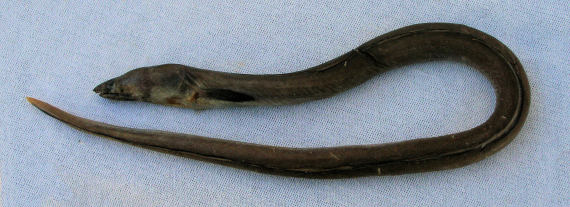
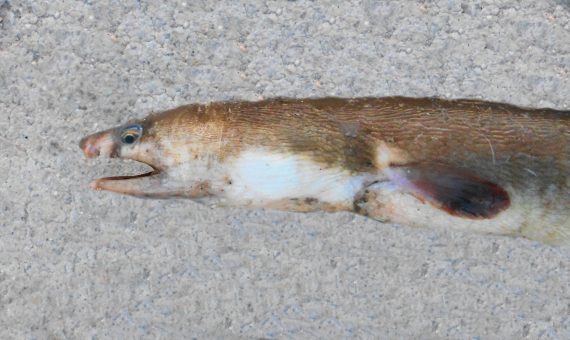
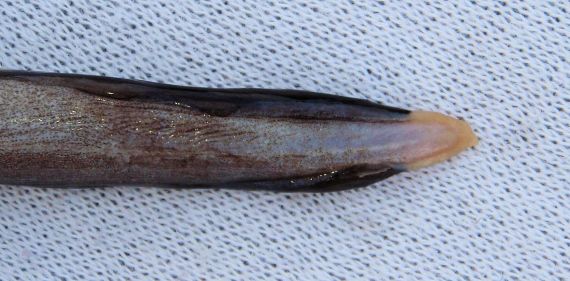 Yellow Snake Eel, Ophichthus zophochir. Fish provided by the commercial fishermen of the greater Los Cabos area, Baja California Sur, August 2009. Length: 62 cm (2 feet 0 inches). Identification courtesy of H.J. Walker, Jr., Scripps Institution of Oceanography, La Jolla, California.
Yellow Snake Eel, Ophichthus zophochir. Fish provided by the commercial fishermen of the greater Los Cabos area, Baja California Sur, August 2009. Length: 62 cm (2 feet 0 inches). Identification courtesy of H.J. Walker, Jr., Scripps Institution of Oceanography, La Jolla, California.
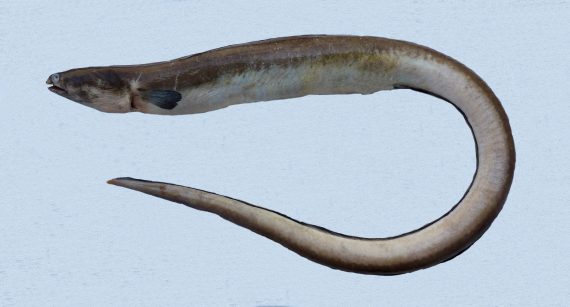
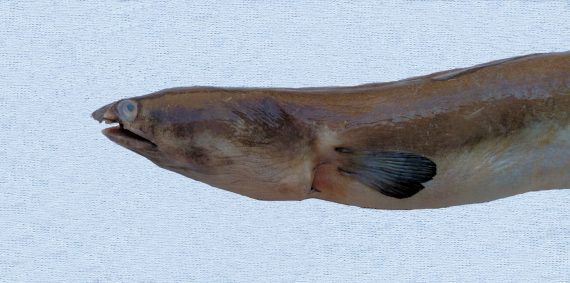 Yellow Snake Eel, Ophichtyhus zophochir. Fish caught from a pier in Puerto Adolfo Lopez Mateos, Baja California Sur, May 2017. Length: 60 cm (2 feet 0 inches). Tail: 65%.
Yellow Snake Eel, Ophichtyhus zophochir. Fish caught from a pier in Puerto Adolfo Lopez Mateos, Baja California Sur, May 2017. Length: 60 cm (2 feet 0 inches). Tail: 65%.
The Yellow Snake Eel, Ophichthus zophochir, is a member of the Snake Eel or Ophichthidae Family, and are known in Mexico as tieso amarillo. Globally, there are sixty-six species in the genus Ophichthus, of which nine are found in Mexican waters, three in the Atlantic and six in the Pacific Ocean.
The Yellow Snake Eel has an elongated slender cylindrical body. They have a uniform drab brown-gray coloration and are lighter ventrally. They have a row of pores on their lower jaw and 3 pores that run from above the rear of their mouth upward behind their eye (pictured above) all of which have dark spots. Their lower jaw, throat, gill cover region, and fins are dark. Their head has an overhanging snout with moderately-sized eyes located over the middle of their large mouth. Their rear nostril is just above the top lip and is covered by a flap. They have 1 barbel between their front and rear nostrils and 2 behind their rear nostril. Their teeth are pointed with 2 rows on the jaws and 1 on the roof of the mouth; they do not have canines. Their dorsal fin originates over the middle of their long and pointed pectoral fins. Their tail, which is blunt and ends in a hard finless point, is 63% to 70% of total length. They have no scales.
The Yellow Snake Eel is a demersal species that is found within burrows in sandy and muddy bottoms at depths up to 107 m (350 feet). They reach a maximum of 98 cm (3 feet 3 inches) in length. The Yellow Snake Eel is poorly studied with very limited information available about their lifestyle and behavioral patterns including specific details on age, growth, longevity, movement patterns, diet, habitat use, and reproduction.
The Yellow Snake Eel is a resident of all Mexican waters of the Pacific Ocean.
The Yellow Snake Eel, due to its unique characteristics, cannot be confused with any other species.
From a conservation perspective Yellow Snake Eels is currently considered to be of Least Concern with stable, widely distributed populations. Although fairly abundant in some area and of good size, are of limited interest to most and normally a “catch and release”. They are captured regularly by shrimp trawlers throughout its range and my artisanal fishermen with hook and line.